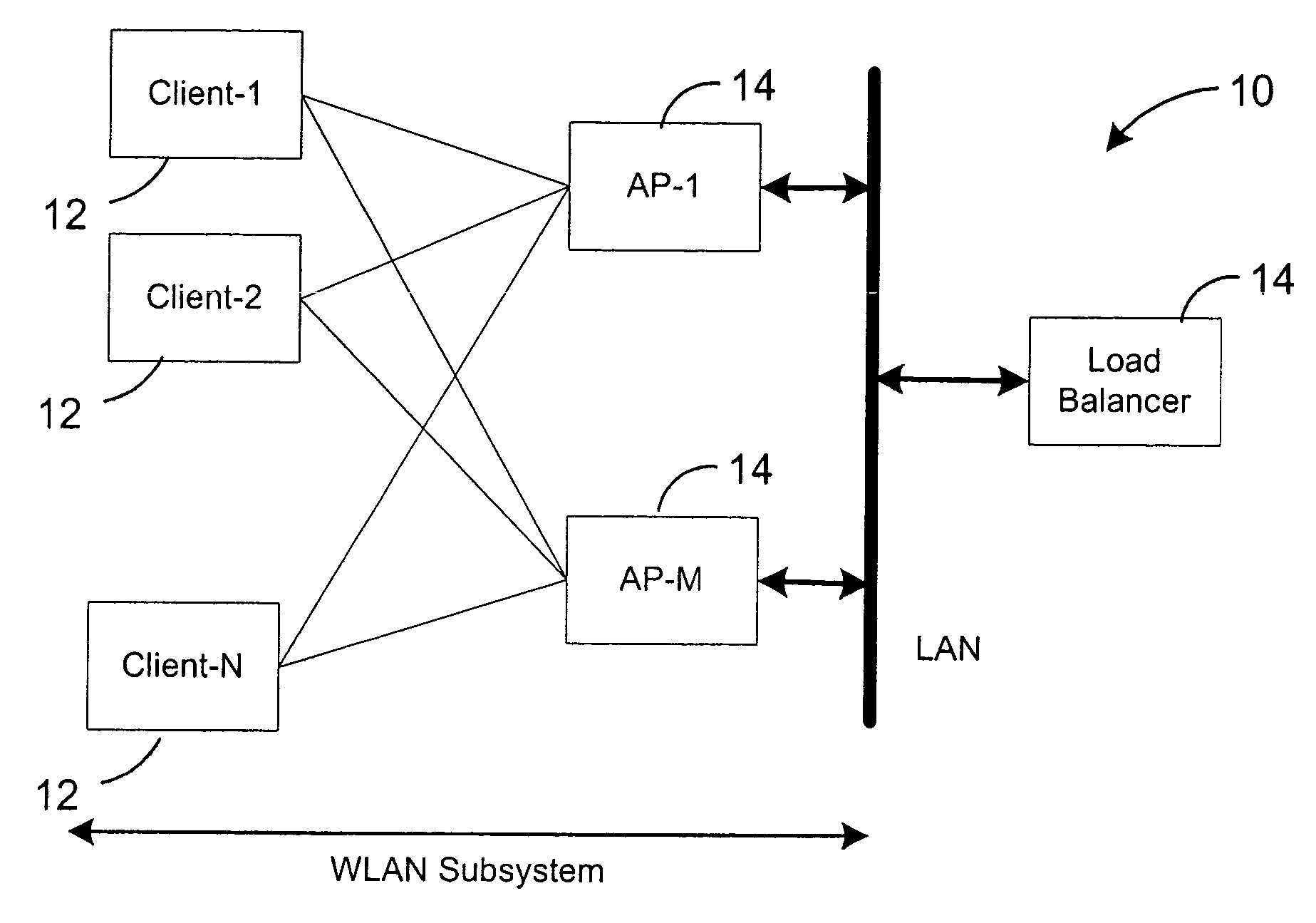Wireless network self-adaptive load balancer
a wireless network and load balancer technology, applied in the direction of digital computer details, wireless commuication services, instruments, etc., can solve the problems of overcrowded network, and affecting the service life of wireless networks
- Summary
- Abstract
- Description
- Claims
- Application Information
AI Technical Summary
Benefits of technology
Problems solved by technology
Method used
Image
Examples
Embodiment Construction
[0008]The embodiments of the present invention as described herein are contemplated as providing a load balancing method and apparatus that is adaptive to changing and unanticipated variations in a WLAN. To that end, a wireless network self-adaptive load balancer is disclosed that seeks the best available load balance solution for providing a balanced distribution of a plurality of wireless clients communicating between a plurality of wireless access points, in a scenario where the available network capacity is higher than the demand for a given topology of APs and clients.
[0009]The present self-adaptive load balancer preferably includes an architecture as shown in FIG. 1. In a WLAN network 10, a plurality of clients is under the purview of one or more APs 14, each containing one or more radios for various wireless channels. The network 10 is preferably fully connectable. The APs 14 are interconnected by a local area network (LAN) for enabling wireless clients 12 to exchange data fr...
PUM
 Login to View More
Login to View More Abstract
Description
Claims
Application Information
 Login to View More
Login to View More - R&D
- Intellectual Property
- Life Sciences
- Materials
- Tech Scout
- Unparalleled Data Quality
- Higher Quality Content
- 60% Fewer Hallucinations
Browse by: Latest US Patents, China's latest patents, Technical Efficacy Thesaurus, Application Domain, Technology Topic, Popular Technical Reports.
© 2025 PatSnap. All rights reserved.Legal|Privacy policy|Modern Slavery Act Transparency Statement|Sitemap|About US| Contact US: help@patsnap.com


